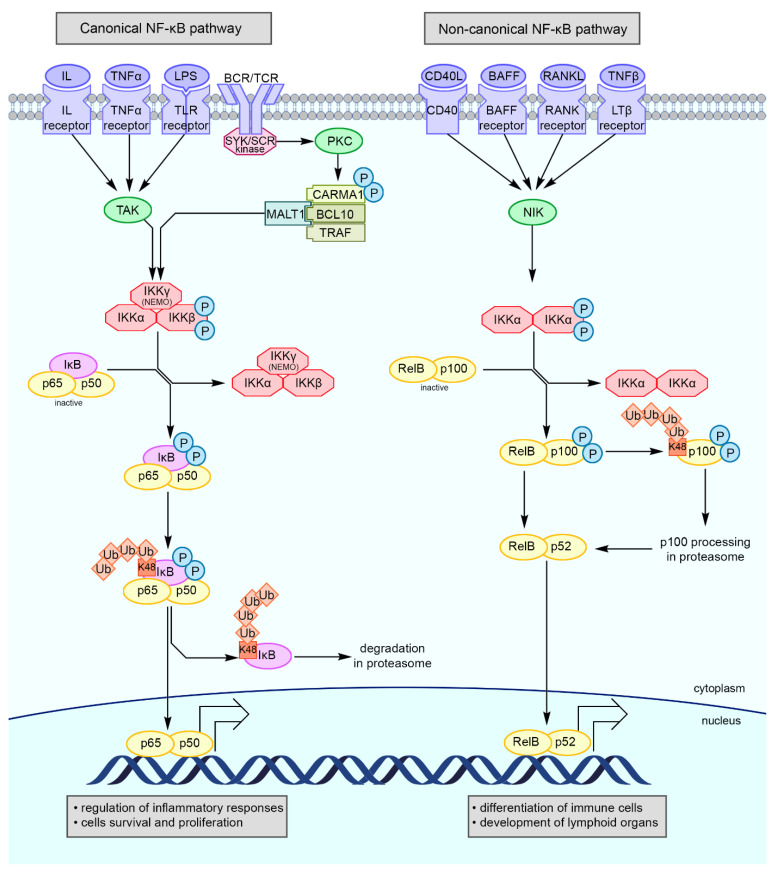Figure 3.
Schematic overview of the canonical (classical) and non-canonical (alternative) NF-κB signaling pathways. Activation of the canonical cascade of NF-κB requires signal transmission via membrane receptors and activation of IKK complex containing NEMO. IKK phosphorylates IκB inhibitor, which is binding NF-κB dimers: p65 and p50. K48-linked polyubiquitination leads to proteasomal degradation of the phosho-IκB, whereas K63-linked polyubiquitin is responsible for stabilizing the membrane receptor signalosome, enable recruitment of downstream adaptors or complexes, and activating kinases. Released NF-κB dimers are translocated into the cell nucleus and regulate transcription of genes. Non-canonical NF-κB pathway is dependent on activation NIK and IKKα complex. The NF-κB dimers remain inactive until IKKα complex phosphorylates p100. Phosphorylation and K48-linked polyubiquitination of p100 cause its proteasome processing which leads to forming p52 subunit. RelB and p52 NF-κB dimers are translocated into the cell nucleus and act as a transcription factor. Abbreviations: BAFF—B-cell activating factor; CD40L—cluster of differentiation 40 ligand; IKK—IκB kinase; IL—interleukin; K48/K63—lysine 48/63; LPS—lipopolysaccharide; LTβ receptor—lymphotoxin β-receptor; NF-κB—nuclear factor κB; NIK—NF-κB-inducing kinase; P—phosphorylation; RANK—receptor activator of nuclear factor kappa-Β; RANKL—receptor activator of nuclear factor kappa-Β ligand; TAKTGF-β-activating kinase; TLR receptor—Toll-like receptor; TNFα/β—tumor necrosis factor α/β; Ub—ubiquitination [75,76,77,78,79,80,81].

